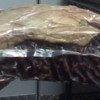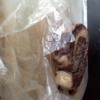I have been there,done that,but I'm certainly no expert.
But,this certainly ain't my first rodeo.

Now,I come from raising/feeding,and having hung my own prime beef for many years.
My family did it long before us.
Our boys are cattle breeders/raisers on a pretty fair scale.
Covers some counties.
Have several friends that have custom cutting houses,drying plants,etc.
Some more in restaurants,that age their own beef.
Probably through friends in bbq,ordering high end comp meats,etc,I have become more involved in care of meats and doing every trick to get the best .
The team has been known to get a $250 + shipping bill for four pork butts.

I'm just not sure all of us need to be involved in some of this,except "we have to try it once".
Jim Minion,a member,had Merle Ellis?-the foremost authority in home aging,as a guest and pro instructor out in the NW.
Jim recommends almost all of us stay away from this.
Don't ask how I know this.

If we are ONLY considering a vac pac and bags,then ask the members here,some of them have done commercial for many years.
My teammate, Ribdog,is one.
I'm kinda wondering if steakman and BBQqueen might know each other ,or have some particular connection.
Nothing wrong with that,but I know a bunch of folks around the circuit and never seem to have seen the names ,or posts,pop up before.
Just my $0.02
Just curious.

